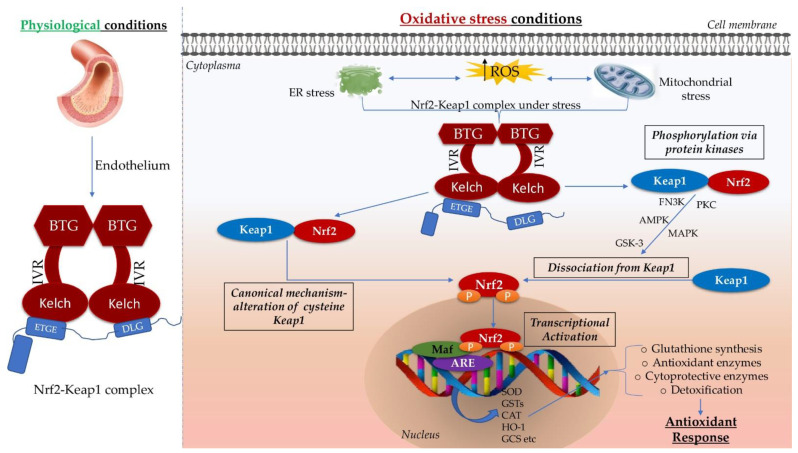Figure 1.
Role of the nuclear factor erythroid factor 2-related factor 2 (Nrf2) in oxidative stress. In physiological conditions, Nrf2 is bound to Keap1 (the key negative regulator and the inhibitory protein of Nrf2) and is secured to the actin cytoskeleton. This limits its transcriptional activity in the nucleus. Under OS conditions, the IVR domain leads to conformational alterations. Nrf2 is activated via canonical mechanism and/or via phosphorylation with secondary dissociation of Nrf2 from Keap1, which translocates into the nucleus and combines with the Maf protein to compose a heterodimer, capable of identifying the suitable ARE sequence. This activated ARE-mediated gene transcription is the Nrf2/Keap1–ARE pathway, which exerts antioxidant cellular functions via regulating the expression of antioxidant genes such as SOD, GST, CAT, and NQO1. Kelch-like ECH-associated protein 1 (Keap1); intervening region (IVR); endoplasmic reticulum (ER); reactive oxygen species (ROS); antioxidant response element (ARE); musculoaponeurotic fibrosarcoma (Maf); superoxide dismutase (SOD); glutathione S-transferases (GSTs), catalase (CAT); heme oxygenase-1 (HO-1); glutamylcysteine synthetase (GCS); protein kinase C (PKC); fructosamine-3-kinase (FN3K); AMP-activated protein kinase (AMPK); mitogen-activated protein kinase (MAPK).

